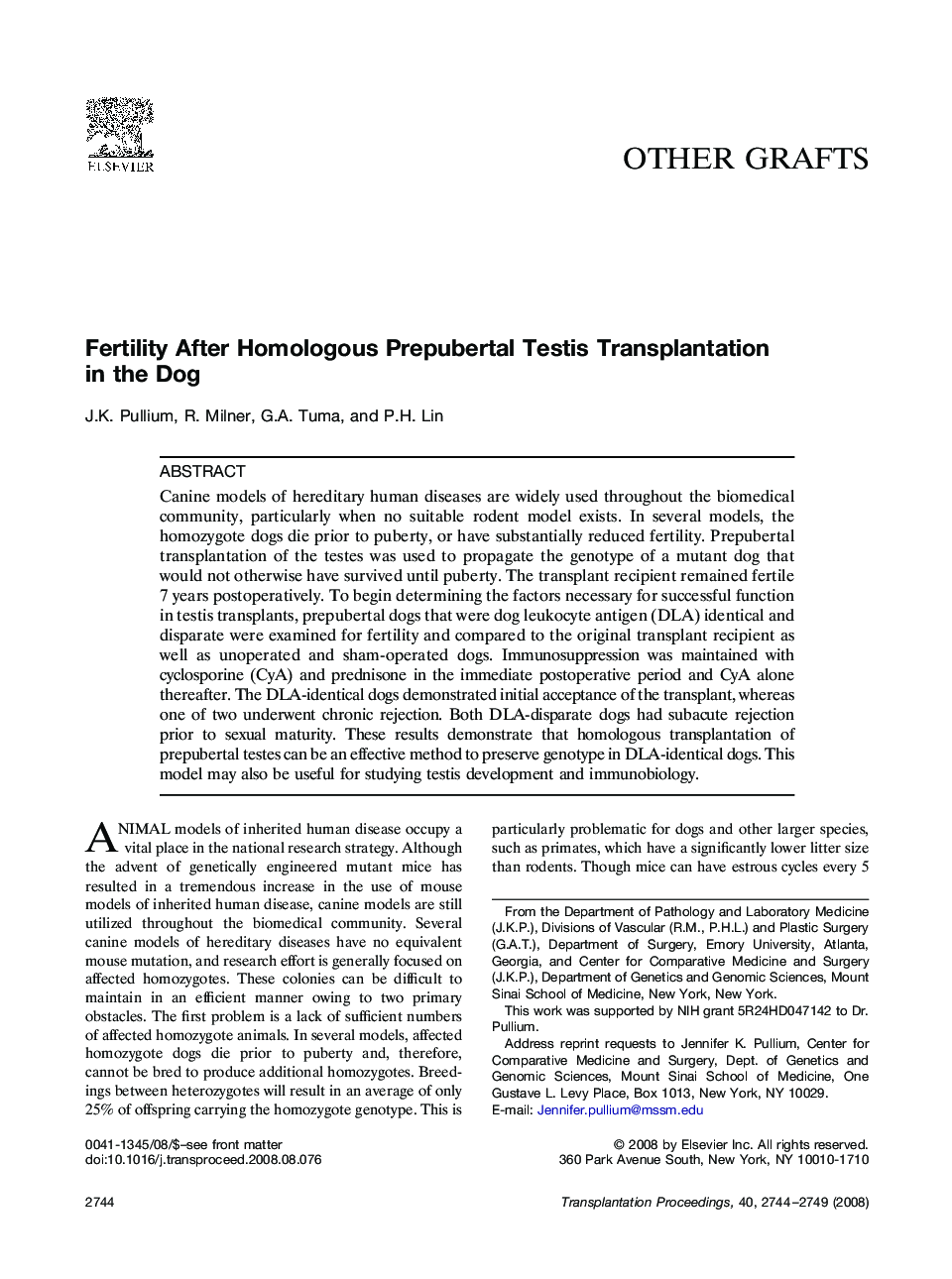| Article ID | Journal | Published Year | Pages | File Type |
|---|---|---|---|---|
| 4262048 | Transplantation Proceedings | 2008 | 6 Pages |
Canine models of hereditary human diseases are widely used throughout the biomedical community, particularly when no suitable rodent model exists. In several models, the homozygote dogs die prior to puberty, or have substantially reduced fertility. Prepubertal transplantation of the testes was used to propagate the genotype of a mutant dog that would not otherwise have survived until puberty. The transplant recipient remained fertile 7 years postoperatively. To begin determining the factors necessary for successful function in testis transplants, prepubertal dogs that were dog leukocyte antigen (DLA) identical and disparate were examined for fertility and compared to the original transplant recipient as well as unoperated and sham-operated dogs. Immunosuppression was maintained with cyclosporine (CyA) and prednisone in the immediate postoperative period and CyA alone thereafter. The DLA-identical dogs demonstrated initial acceptance of the transplant, whereas one of two underwent chronic rejection. Both DLA-disparate dogs had subacute rejection prior to sexual maturity. These results demonstrate that homologous transplantation of prepubertal testes can be an effective method to preserve genotype in DLA-identical dogs. This model may also be useful for studying testis development and immunobiology.
